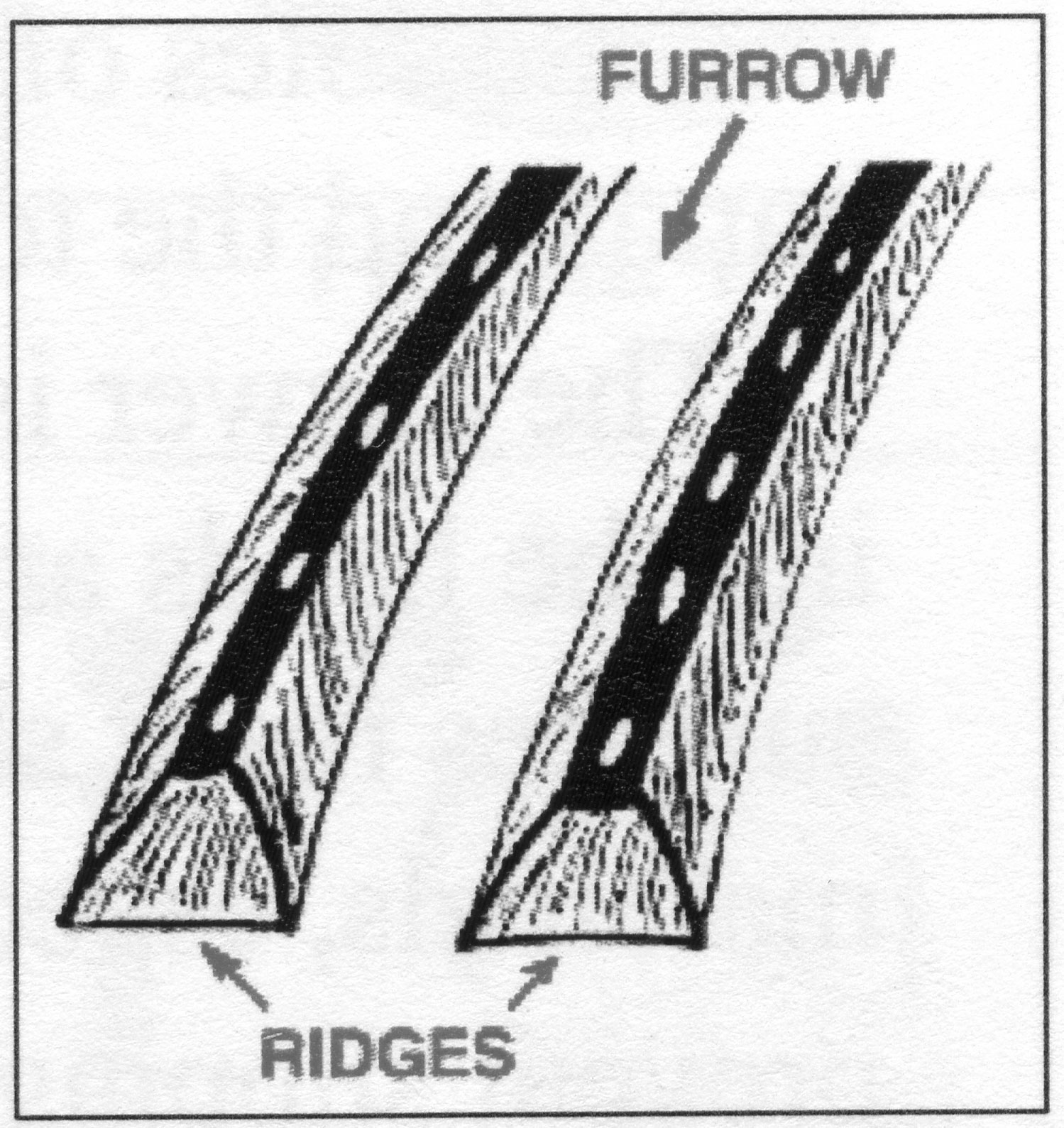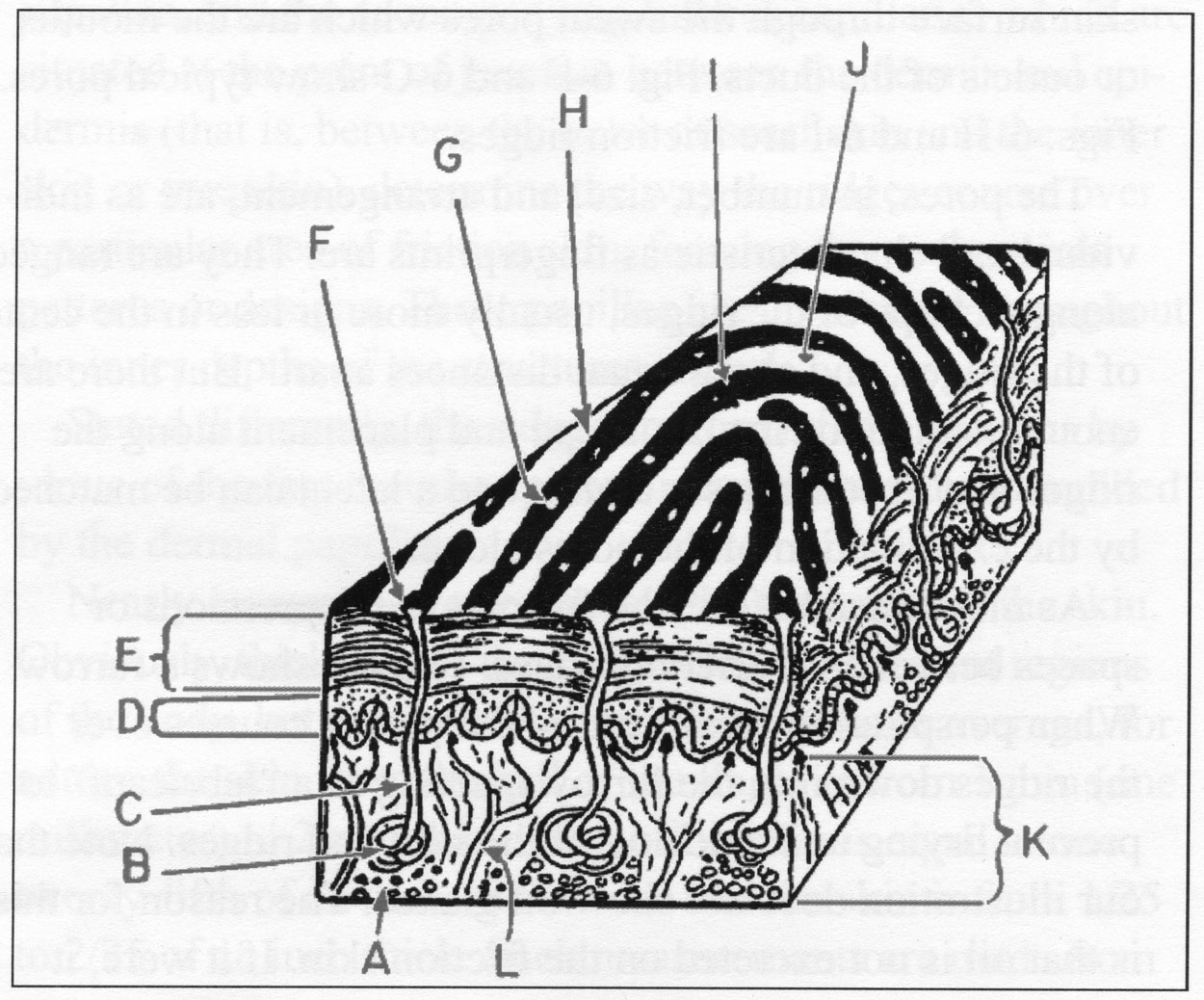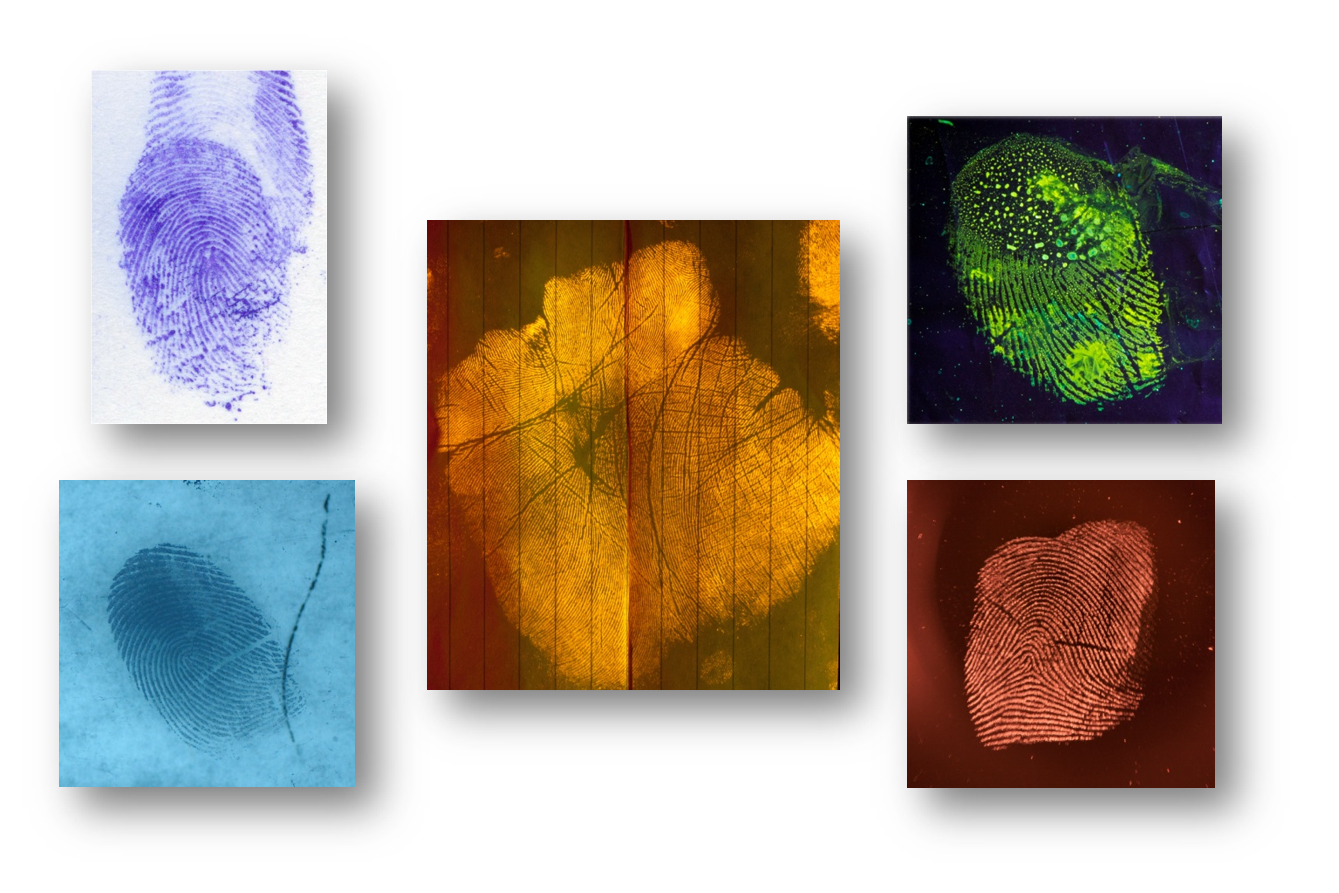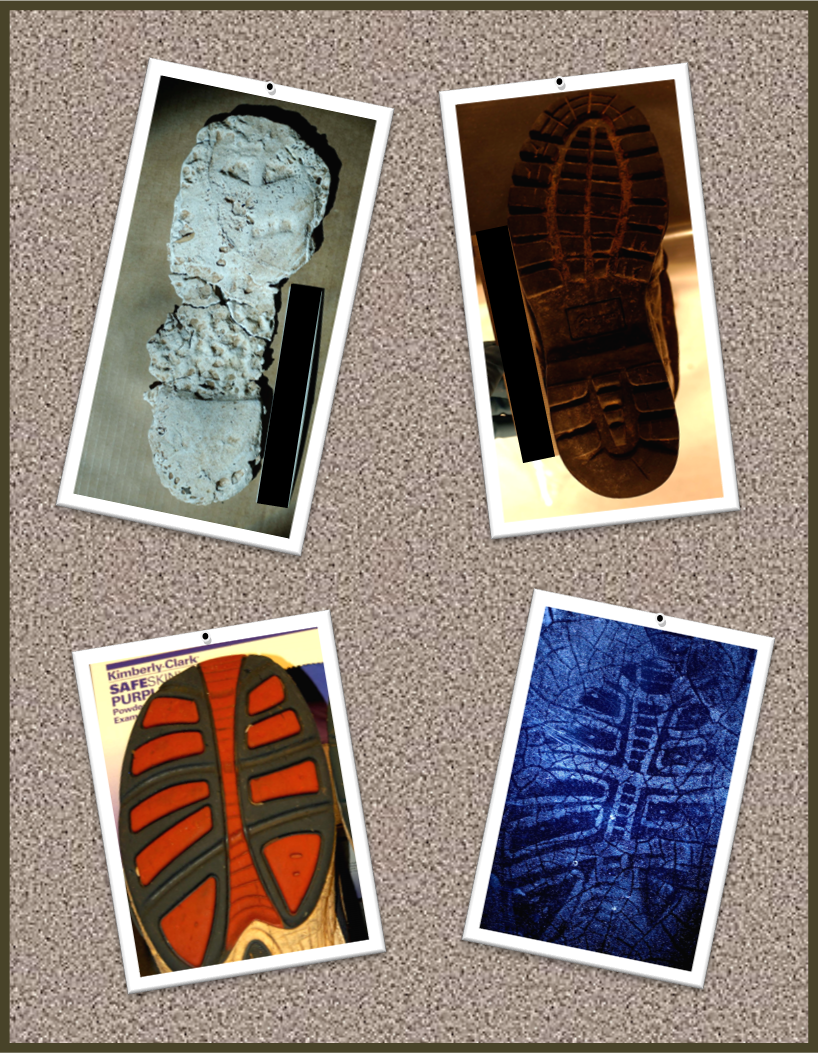
You are here
Latent Evidence Impression Evidence Information
Fingerprint Impressions
On the palmar and plantar portions of the hands and feet, each person has a unique and permanent (barring scarring or injury) arrangement of ridges and furrows, called friction ridge skin. You can think of this skin like the rubber portion of a stamp.
The term "latent" means "hidden". Latent prints are most commonly fingerprints or palm prints that are collected from a crime scene. Latent prints usually need to be processed or developed with a chemical or physical developer in order to be visible to the naked eye.
Latent prints can be left by simply touching an object in a crime scene. The ridges of the hands and feet are composed of sweat pores, but other portions of the body, such as the face, are composed of a variety of glands and pores, including oil glands. Because of this, the ridges of the hands accumulate sweat as well as oil, and these can be easily transferred quite routinely. Anything that accumulates on the ridges of the finger can be transferred and left behind in the same formation as the fingerprint ridges.
To use the stamp analogy once more, think of your finger as the stamp and any accumulated substances (sweat, oils, and various other substances) that it acquires as the "ink". When a stamp is placed on a surface, the ink is left behind in whatever pattern the stamp holds. Similarly, when a person places his/her hand on a surface, any accumulated substances will be left behind in the pattern of the ridges.
In order to view latent prints, many times a processing technique must be used. Listed here are a variety of processing techniques that can be used including (but not limited to):
- Cyanoacrylate/Superglue (CA) Fuming
- Black Powder
- Dye Staining
- Indanedione
- Small Particle Reagent (SPR)
- Leucocrystal Violet (LCV)
- Amido Black
- Ninhydrin
- Vacuum Metal Deposition (VMD)
- Recover LFT
Some examples of latent prints that have been processed with a few of these techniques are pictured below.
Figure 3: Examples of processed latent prints. (top left) LCV; (bottom left) SPR; (middle) Indanedione; (top right) Acid Yellow; (bottom right) CA fumed
Footwear Impressions
Footwear impressions can be latent or visible impressions that are left in 2-dimensions (2-D) or 3-dimensions (3-D).
2-D impressions will be any impression that only has length and width measurements.
2-D footwear impressions are typically found indoors and are associated with objects touched at the crime scene. This can include any object or surface in the crime scene.
An example of this could be a perpetrator who steps on some loose papers that are on the floor of the crime scene and leave a dirt impression on the paper.
3-D impressions will have length, width, and depth measurements.
3-D footwear impressions are typically located outdoors in substrates such as sand, clay, mud, or snow, but can be found in any similar substrate that is malleable.
An example of this could be a perpetrator stepping in the mud right outside of a crime scene, and a footwear impression of his shoe/boot is left behind in the mud.
Processing 2-D and 3-D footwear impressions:
2-D impressions are normally photographed at a 90-degree angle with a scale. For certain 2-D impressions, an electrostatic dust collector can be utilized.
3-D impressions are photographed in the same way, but a casting material can also be used to "lift" the impression and retain impression details.
For instructional videos by the National Institute of Standards and Technology (NIST) regarding the collection of impression evidence, please follow the link below:
Trace Evidence Collection: Crime Scene Investigation Guide Videos | NIST



